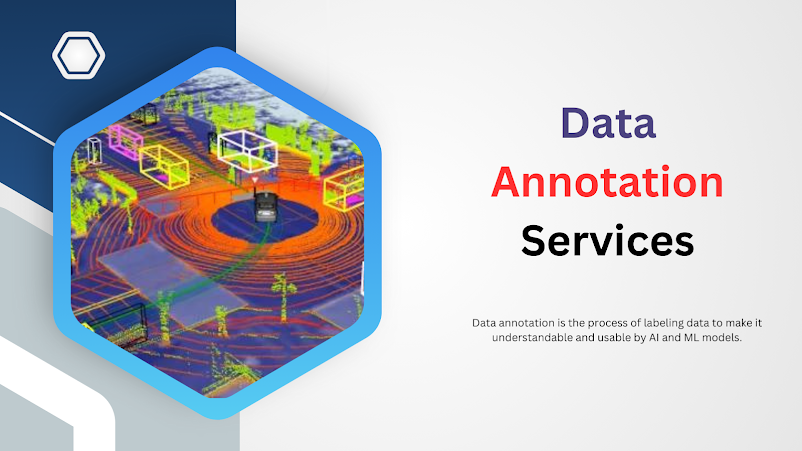
Introduction:
In the age of information, data is more than just numbers and facts; it's the driving force behind artificial intelligence (AI) and machine learning (ML) technologies. These technologies are transforming industries, from healthcare and automotive to finance and retail. However, for AI to work effectively, it needs one crucial ingredient: high-quality, well-annotated data. This is where Data Annotation Services come into play.
What is Data Annotation?
Data annotation is the process of labeling data to make it understandable and usable by AI and ML models. This can include labeling images, categorizing text, or annotating video footage to train algorithms to recognize patterns and make decisions. For example, in autonomous vehicle technology, data annotation is used to label images of road scenes, which helps the vehicle's AI learn to navigate roads safely.
Why is Data Annotation Crucial?
The accuracy of AI predictions depends significantly on the quality of the data used during training. Well-annotated data ensures that the AI system learns the right features and nuances of the dataset, leading to better performance and reliability. Without precise annotations, AI models can develop biases or inaccuracies, which could lead to ineffective or even harmful decisions.
Types of Data Annotation
- Image Annotation: This involves various techniques like bounding boxes, polygons, and semantic segmentation to label images for tasks such as facial recognition or object detection.
- Text Annotation: Used in natural language processing (NLP), text annotation involves categorizing or tagging text data to train chatbots, sentiment analysis tools, or automated translation services.
- Video Annotation: Similar to image annotation but applied frame-by-frame in videos. This is crucial for motion detection in surveillance or sports analytics.
- Audio Annotation: Labeling audio data for speech recognition systems or voice-activated assistants.
The Process of Data Annotation
Data annotation typically involves several steps:
- Data Collection: Gathering the raw data that needs to be annotated.
- Pre-processing: Cleaning and organizing the data into a suitable format for annotation.
- Annotation: The actual task of labeling the data according to predefined criteria.
- Quality Check: Ensuring the annotations are accurate and consistent.
- Model Training: Using the annotated data to train AI models.
- Feedback Loop: Refining the data and annotations based on the performance of the AI model.
Choosing a Data Annotation Service
- When selecting a data annotation service, consider the following factors:
- Quality and Accuracy: Look for services that emphasize the accuracy and consistency of their annotations.
- Scalability: Ensure the service can handle the volume of data you need processed.
- Security: Since data often includes sensitive information, choose a service that guarantees the confidentiality and security of your data.
- Expertise in Your Industry: Different industries require different types of data annotation. A service with experience in your sector can offer valuable insights and better quality.
Conclusion
Data annotation services are vital for the development and enhancement of AI technologies. They provide the foundational data that helps machines learn and make intelligent decisions. As AI continues to permeate various sectors, the demand for precise and high-quality data annotation is only set to grow. By partnering with a reliable data annotation service, businesses can unlock the full potential of their AI initiatives, ensuring they stay ahead in the rapidly evolving technological landscape.
For those interested in exploring comprehensive data annotation solutions, consider visiting Globose Technology Solutions Pvt Ltd, which specializes in data collection and annotation services tailored to various industry needs.
By understanding and leveraging these services, companies can enhance their AI capabilities, leading to more innovative solutions and competitive advantages in their respective fields.





